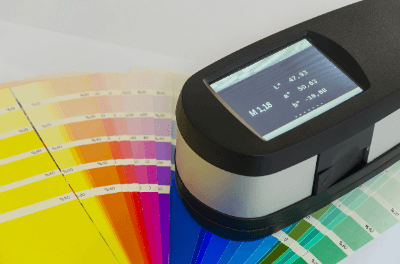All Categories
History
This section provides an overview for spectrophotometers as well as their applications and principles. Also, please take a look at the list of 0 spectrophotometer manufacturers and their company rankings.
Table of Contents
Department of Chemistry, Graduate School of Science, Tohoku University (Master of Science)
As a display engineer, engaged in Seiko Epson Corporation, Sony Corporation, Japan Display Corporation, etc.
https://researchmap.jp/tanakachihiro
https://www.linkedin.com/in/chihiro-tanaka/
 A spectrophotometer is a device that quantifies color. The human eye can also judge color, but it cannot make accurate judgments because it is a qualitative evaluation and because colors are seen differently by different people.
A spectrophotometer is a device that quantifies color. The human eye can also judge color, but it cannot make accurate judgments because it is a qualitative evaluation and because colors are seen differently by different people.
On the other hand, the color of a product is often one of the quality evaluation items. Therefore, spectrophotometers numerically evaluate color by quantifying brightness and the intensity of each color, such as red, blue, and green.
In addition, since the way colors appear changes depending on the way light hits an object, the distance from the light source and its intensity are also recorded when measuring with a spectrophotometer.
As the word "spectrophotometer" implies, it measures the intensity of different wavelengths of light. The device receives light that hits the surface of a sample from an external light source, such as sunlight or illumination, and outputs a result showing how the intensity and color of each wavelength appears. There are three types of spectrophotometers: 0°/45° spectrophotometers, integrating sphere spectrophotometers, and multi-angle spectrophotometers.
The 0°/45° spectrophotometer is the most common method of evaluating color when viewed from a single angle. This method is used for samples with smooth surfaces. The integrating sphere spectrophotometer collects and measures light diffused across the surface of a sample and is useful for samples with uneven surfaces or those that contain gloss. Multi-angle colorimeter is a method to evaluate color from various angles, and is used to evaluate products whose colors change depending on the angle from which they are viewed.
Spectrophotometers can also be used to calculate the conditions under which colors appear the same even under different light source conditions, making them suitable for evaluating how colors appear under various conditions.
Colorimeters, or colorimeters, are used for a variety of purposes, but here we will discuss two typical types of colorimeters: colorimeters (color difference meters) and spectrophotometers.
The L*a*b* color space (official name: CIE 1976 L*a*b*) established by the Commission Internationale de l'éclairage (CIE) is commonly used to quantify colors using colorimeters.
It is called L*a*b* (Elster-Aester-Biester) color space to distinguish it from the original Hunter Lab color space (official name: Hunter 1948 Lab), which was devised based on the human visual sense to make color differences as even as possible for human discrimination.
In L*a*b* color space, colors are represented by three axes: the L* axis for lightness, and the a* and b* axes for chromaticity (hue and saturation). Each axis is arranged as shown in Figure 1, with L* values ranging from 0 to 100, where L*=0 corresponds to the brightness of black (a state in which light is completely absorbed) and L*=100 corresponds to the brightness of white (100% reflectance) with perfect diffuse reflection. a* axis represents the red (+a*) to green (-a *) direction, while the b* axis represents the yellow (+b*) to blue (-b*) direction. In this case, in the a*b* plane, the direction from the origin to any coordinate corresponds to hue (color tone), and the distance from the origin to any coordinate corresponds to saturation (vividness). In other words, the farther outward the color is, the more vivid it is, and the farther inward the color is, the duller it is.
As mentioned above, the range of L* coordinates is defined as 0 to 100, but the range of a* and b* coordinates is not univocal. This is because the L*a*b* color space is a conversion of a master color space (such as CIE 1931 XYZ), and the values vary depending on the source color space.
In recent years, CIE DE2000, which has been improved to eliminate differences from human visual results in the CIE color space, has been introduced.
The color management method, which digitizes and manages colors by measuring spectral characteristics with high precision using spectrophotometers, expressing colors numerically using the L*a*b* color space, and using matching technology to match the color of the target product to a reference color, is becoming increasingly important in the future.
*Including some distributors, etc.
Sort by Features
Number of Employees
Newly Established Company
Company with a History